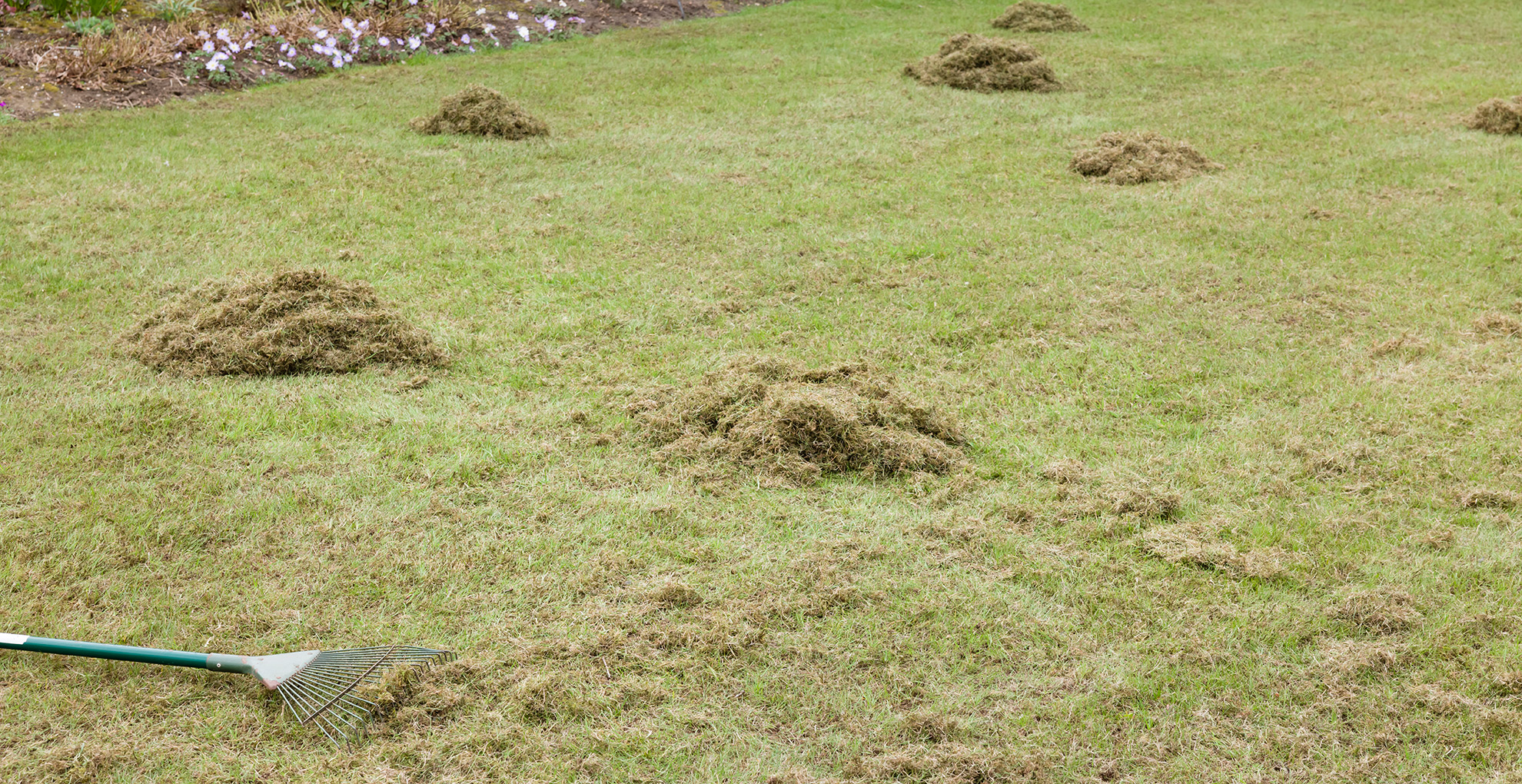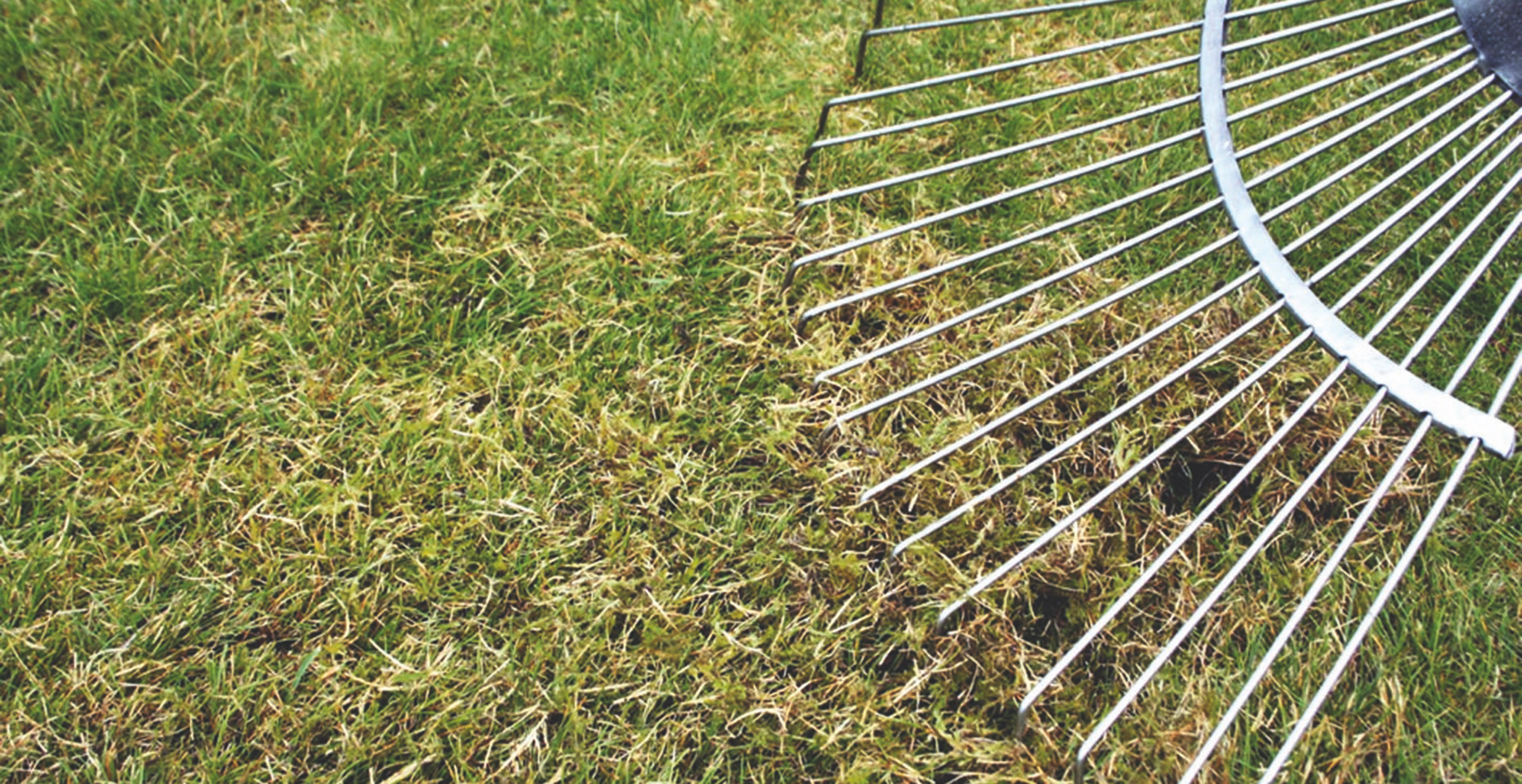
Unpredictable downpours can leave you questioning if you can scarify a wet lawn because it can be hard to gauge when to tackle essential grass maintenance during the spring months.
Essentially, good lawn care is all about timing and climate conditions. From knowing when to first cut the grass after winter to mastering the ideal time to plant grass seed, it takes thoughtful planning to keep grass happy and healthy.
When accessing the best time to scarify grass, the act of removing the top layer of dead organic matter and moss commonly known as 'the thatch', timing can prove tricky because it's less straightforward than knowing when to mow.
We've consulted with lawn specialists and horticultural experts to find out if scarifying is ok when the grass is wet.
Can you scarify a wet lawn?
As any gardener knows it's not advisable to mow wet grass, but can you scarify a wet lawn because you're not cutting the blades? Scarifying is a technique that removes moss or dead organic matter from a lawn by using a rake to comb the surface. To determine a best practice we have turned to experts in lawn care to find out what they recommend.
Should you scarify a wet lawn? "Ideally no," says Chris McIlroy, a lawn expert at The Grass People. "You should aim to scarify your lawn when it isn’t soaking wet, as you could end up pulling up more than just the thatch."
"We recommend waiting until lawns are dry before scarifying, and it’s best to wait a few days after rainfall to really let the grass dry out," agrees Peter Chaloner, managing director of lawn care specialists Cobra. "This protects the root from being pulled up in the process, making sure that only the thatch and dead grass are removed."
Gemma Vincent, product manager at Hayter adds: "Whilst it's possible to scarify wet grass, we'd never recommend it! If you've got clear weather, water your grass a couple of days before scarifying. If you try to scarify a wet lawn, you're increasing the risk of damaging your grass and soil."

What are the best conditions to scarify your lawn?
It's important to scarify your lawn to prevent any surface matter from suffocating the roots of healthy grass. In order to protect sad healthy grass it's best to carry out the raking process at the optimum time to ensure you don't risk damaging your lawn.
"It’s best to scarify when the grass is in “growth mode," advises Peter Chaloner. "This is when it will be strong enough to survive what can be quite a harsh process. Spring or autumn are the best times for this as it’s not too hot or too cold. During these times, the grass is fully growing and is at its most resilient so can recover from the raking process, leaving a luscious, healthy lawn."
Chris adds: "We recommend scarifying your lawn during late spring or early autumn, at this time of the year, your ground will be warm enough to help your lawn recover. Avoid scarifying your lawn during winter, or deep into the summer months, when frost or drought could be possible, and your lawn is more susceptible to damage."

Is it best to cut grass before scarifying?
Given how often you should mow your lawn it's important to factor this into your scarifying routine to balance lawn care perfectly. "Yes, to get the best results and the healthiest lawn, it’s recommended to mow first," advises Peter Chaloner. "This will remove the bulk of the grass so that the scarifier can easily reach the dead grass that it needs to remove."
"After you complete scarifying your lawn, you will most likely get a shock at how your lawn has ended up looking worse than when you began," warns Chris McIlroy. "But not to worry, this is all very normal. If you scarify correctly, you should be left with some bare and thin patches, and so you will need to overseed your lawn after you scarify. For this reason, we recommend always mowing your lawn before scarifying, as you will not be able to do it after as you will need to give the new grass a chance to grow."
How long should grass be before scarifying?
Knowing it's best to cut grass before scarifying the question is then how long should the grass be before you start? "Before scarifying lawns should be cut short, but not scalped," advises Peter Chaloner. "We suggest doing this over a few cuts beforehand so as not to shock the grass blades by removing too much in one go."
"If you don’t plan to overseed your lawn after scarifying, then we recommend cutting your lawn down to a manageable height before scarifying," confirms Chris McIlroy. "Scarifying it when it is too long won’t do any good, and when it is tightly cut, it also won’t be beneficial for your grass."
"The ideal grass length for scarifying will depend on many things, including your soil makeup and more," explains Gemma. "You'll know it's time to scarify when your lawn is beginning to look a little tired and yellow, and is experiencing straggly lateral growth rather than growing thickly and upwards."







